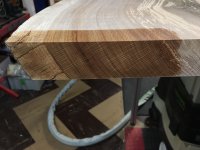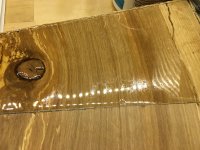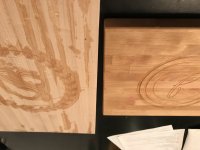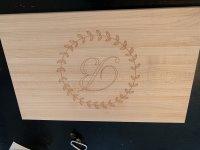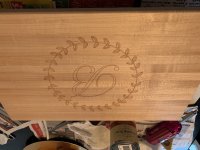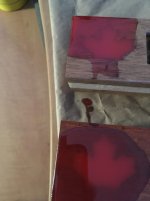Mario Turcot
Member
- Joined
- Nov 26, 2017
- Messages
- 1,288
Disclaimer: First time using epoxy + pigments.
I carved an indoor sign and want to fill the carved text with Epoxy. I will be using Ecopoxy UVpoxy. The final finish will be 3-5 coats of danish oil. The carved letters are 4mm deep and about 3/16" width.
Q: Do I need to heat the epoxy to make sure it sit correctly at the bottom?
Q: Should I apply a first coat of sealer or Danish oil prior to pouring the epoxy?
Thanks!
I carved an indoor sign and want to fill the carved text with Epoxy. I will be using Ecopoxy UVpoxy. The final finish will be 3-5 coats of danish oil. The carved letters are 4mm deep and about 3/16" width.
Q: Do I need to heat the epoxy to make sure it sit correctly at the bottom?
Q: Should I apply a first coat of sealer or Danish oil prior to pouring the epoxy?
Thanks!


